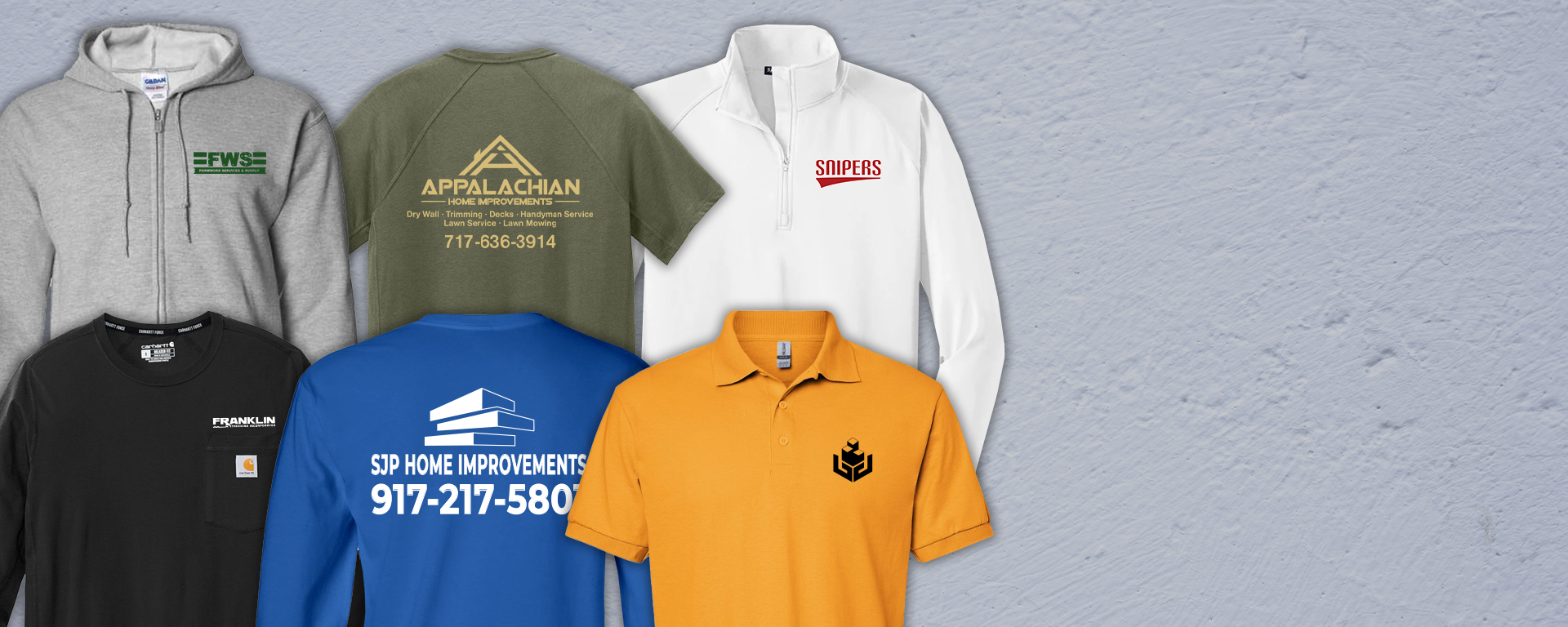How Branded Clothing Uses Fabric to Match Season and Occasion
How Branded Clothing Uses Fabric to Match Season and Occasion
Blog Article
Understanding Clothes: The Significance of Fabric Selections in Your Closet
The choice of material in clothes plays a critical duty in both aesthetics and performance. Various materials provide varying levels of breathability, convenience, and longevity, straight affecting the wearer's experience. Comprehending these nuances can boost one's closet markedly. Yet, lots of overlook how these selections can impact not simply individual style, but likewise sustainability. What fabric decisions could redefine your closet and straighten it with both style and responsibility?
The Role of Textile in Fashion and Performance

Typical Material Types and Their Attributes
When picking apparel, comprehending the characteristics of common textile kinds is necessary for making educated choices. Cotton, a widely-used all-natural fiber, is recognized for its gentleness, convenience, and breathability, making it appropriate for laid-back wear and day-to-day garments. Linen, an additional all-natural alternative, boasts exceptional moisture-wicking buildings and an unique appearance, suitable for warm climates.Wool, usually favored for its warmth and longevity, differs in excellence; merino woollen is soft versus the skin, while coarser kinds are made use of for outerwear. Synthetic materials like polyester and nylon supply resilience and resistance to wrinkles, making them prominent for activewear and travel garments. Lastly, blends, which integrate natural and artificial fibers, can enhance functionality while maintaining comfort. By acknowledging these fabric features, people can choose garments that straightens with their way of living and visual choices.
Breathability and Convenience: Selecting the Right Fabrics for Different Environments
Picking the appropriate materials for numerous climates can greatly improve convenience and overall wearability. Breathable materials are necessary in hot environments, as they allow air flow and wetness dissipation. Fabrics such as cotton, bed linen, and moisture-wicking synthetics efficiently draw sweat far from the body, maintaining the user cool and dry. Alternatively, in chillier environments, thicker textiles like woollen or fleece offer insulation while retaining breathability, making sure warmth without overheating.Additionally, the option of textile weight plays an essential duty; light-weight materials are preferable for summer, whereas larger choices are suited for winter season wear. Recognizing the distinct residential properties of each textile makes it possible for individuals to clothe appropriately for varying climate condition. Inevitably, picking breathable and comfortable materials customized to certain environments can substantially enhance day-to-day convenience and improve the overall experience of wearing clothes.
Resilience and Treatment: Exactly How Fabric Influences Longevity of Your Wardrobe
Selecting the appropriate materials can significantly influence the resilience and care requirements of a closet. Fabrics such as cotton and polyester are known for their resilience and ease of maintenance, making them ideal for daily wear. In comparison, delicate products like silk and shoelace call for more careful handling and specialized cleansing methods, which can increase the moment and effort needed for care. Branded Clothing.Durability is also influenced by the textile's weave and finish; snugly woven materials often tend to withstand damage far better than loosely woven alternatives. Additionally, artificial blends often give improved sturdiness, combining the most effective top qualities of multiple fibers.Understanding the care instructions for each material is necessary, as improper cleaning or drying out can cause premature wear. Ultimately, selecting resilient materials can bring about a longer-lasting closet, reducing the frequency of replacements and adding to a much more sustainable fashion selection
The Impact of Material on Fit and Silhouette

Sustainable Fabric Choices: Making Eco-Friendly Decisions
The influence of textile prolongs beyond fit and silhouette to encompass ecological variables, prompting a growing passion in lasting textile choices. Green textiles, such as organic cotton, hemp, and Tencel, are gaining traction among customers that prioritize sustainability in their wardrobes. These products are commonly generated with fewer chemicals and water, reducing their eco-friendly footprint.Additionally, recycled textiles, made from post-consumer waste, use an ingenious service to the fabric sector's contamination issue. Brands increasingly embrace transparency in their sourcing methods, enabling customers to make educated choices concerning their purchases.Choosing sustainable materials not just supports honest practices but also urges the style market to embrace even more responsible production approaches. As recognition of ecological issues increases, people are prompted to assess the long-term impact of their textile choices, cultivating an activity in the direction of a more ecologically conscious and sustainable strategy to fashion.
Elevating Design: Exactly How Material Can Transform a Clothing
While numerous may concentrate on color and cut when choosing an attire, the choice of fabric plays an essential function in raising design and boosting total look. Different products share distinctive state of minds and messages; for instance, silk emanates luxury and elegance, while jeans offers an informal, loosened up ambiance. The appearance and drape of a fabric can considerably alter the silhouette, with organized fabrics giving a refined appearance and softer ones developing an extra fluid, unwinded aesthetic.Moreover, the weight of the material affects wearability across seasons. Light-weight fabrics like linen and cotton are ideal for summertime, while much heavier products such as wool and velvet offer warmth and style in colder months. Comprehending material residential or commercial properties, such as breathability and stretch, additionally empowers people to make informed selections that improve convenience without endangering style. Ultimately, the right fabric can change an attire from best site common to remarkable, making it a vital consideration in any wardrobe.
Regularly Asked Questions
How Do I Determine the Textile Content of My Clothing?
To recognize material content, one can check out care labels, conduct melt examinations for fiber identification, or get in touch with fabric examples. These techniques help differentiate products, making sure notified selections for garments care and upkeep in daily wear.
Can Fabric Choice Affect My State Of Mind or Self-confidence?
Fabric option can greatly affect a person's state of mind and confidence. Branded Clothing. Particular materials might stimulate sensations of convenience or style, while others can feel uncomplimentary or limiting, ultimately influencing self-perception and psychological wellness throughout the day
What Fabrics Are Ideal for Delicate Skin?
For people with sensitive skin, all-natural textiles like cotton, bamboo, and linen are typically advised. These products are breathable, hypoallergenic, and much less likely to trigger irritation, making them suitable selections for convenience and skin wellness.
Exactly how Do I Effectively Clean and Take Care Of Various Fabrics?
To effectively wash and care for various textiles, one should think about each material's details needs, consisting of temperature settings, cleaning agents, and drying out methods, ensuring longevity and preserving the material's original high qualities for suitable usage.
Exist Certain Fabrics for Athletic or Performance Wear?
Sports or performance wear frequently makes use of materials such as nylon, spandex, and polyester. These products are developed for moisture-wicking, breathability, and flexibility, improving activity and comfort throughout exercises while giving toughness and support. Alternatively, in cooler climates, thicker materials like wool or fleece provide insulation while preserving breathability, guaranteeing heat without overheating.Additionally, the option of fabric weight plays an important role; light-weight textiles are more suitable for summer season, whereas heavier alternatives are suited for winter wear. In contrast, fragile materials like silk and lace call for more mindful handling and specialized cleansing methods, which can enhance the time and initiative needed for care.Durability is additionally influenced by the fabric's weave and surface; tightly woven textiles tend to resist wear and tear far better than loosely woven choices. In contrast, rigid materials can restrict activity but supply a timeless, refined look.Moreover, the thickness and appearance of the material can influence the aesthetic understanding of body form. The effect of textile extends past fit and silhouette to include ecological factors, prompting a growing rate of interest in lasting fabric options. The appearance and drape of a textile can drastically alter the shape, with structured materials supplying a sleek appearance and softer ones developing a much more fluid, loosened up aesthetic.Moreover, the weight of the textile influences wearability across seasons.
Report this page